40 Magnesium Rich Foods, Fruits & Vegetables to Include in your Diet
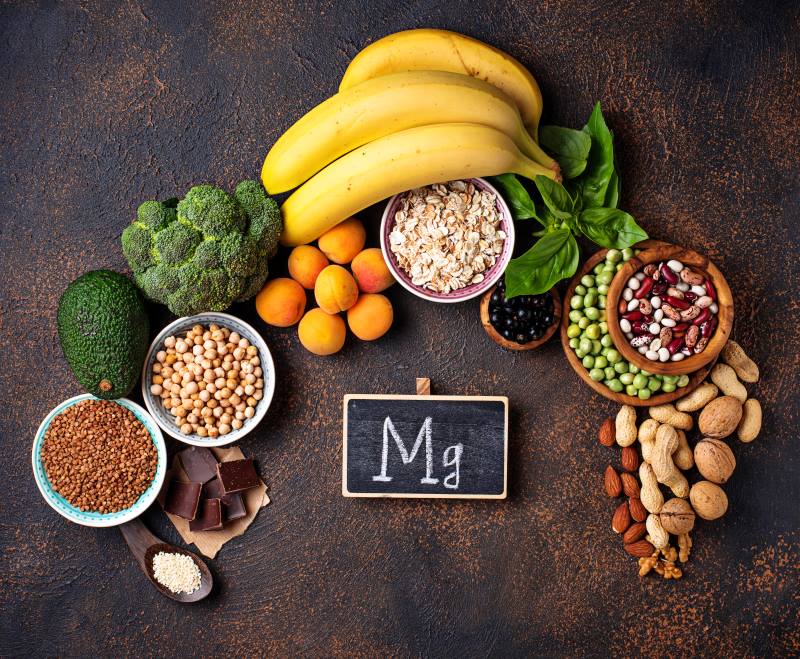
Playing a vital role in many bodily functions, magnesium is an essential mineral that helps with energy production, muscle and nerve function, and bone health. While magnesium deficiency is common, eating magnesium-rich foods can help maintain good health and prevent related problems.
Understanding magnesium's importance cannot be overemphasised since it affects more than 300 enzymatic reactions within the body. Also, it supports healthy blood pressure and cardiovascular system functioning, causes relaxation, and relieves cramps. However, due to poor dietary patterns, most people do not meet their daily requirement for magnesium.
Thus, this guide will help you explore an array of naturally abundant magnesium-rich foods, empowering you to make informed choices and enhance your overall health and vitality.

Table of Contents

What is Magnesium?
Magnesium is an extremely important mineral for the body in various physiological processes. Magnesium is essential in cellular activities as a co-factor in more than 300 enzymatic reactions. However, many people do not get enough of this mineral from their diets despite its importance.
Leafy greens, nuts, seeds, whole grains, and beans are among the foods that are rich in magnesium. However, soil depletion, as well as food processing methods, might result in a low intake of the mineral. This may lead to some health problems if not addressed. That’s why choosing foods with abundant magnesium is very important to maintain magnesium levels and promote overall well-being.
What are the Sources of Magnesium?
Magnesium, an essential mineral for human health, is found abundantly in various natural sources. One primary source of magnesium is dietary intake from foods like leafy green vegetables, nuts, seeds, whole grains, and legumes. Leafy greens like spinach and kale are rich in magnesium, providing an excellent dietary source for meeting daily requirements.
Another potential source of magnesium is through supplementation, particularly for individuals with inadequate dietary intake or specific health conditions requiring additional magnesium support. Incorporating magnesium-rich foods into one's diet can help maintain optimal magnesium levels in the body.
Top 40 Food Items High in Magnesium
Magnesium-rich foods are essential for optimal health and well-being, as magnesium is crucial in various physiological functions. Including magnesium-rich foods in your diet can help you meet your daily magnesium requirements. Here are some categories of foods high in magnesium:
List of Magnesium-Rich Vegetables
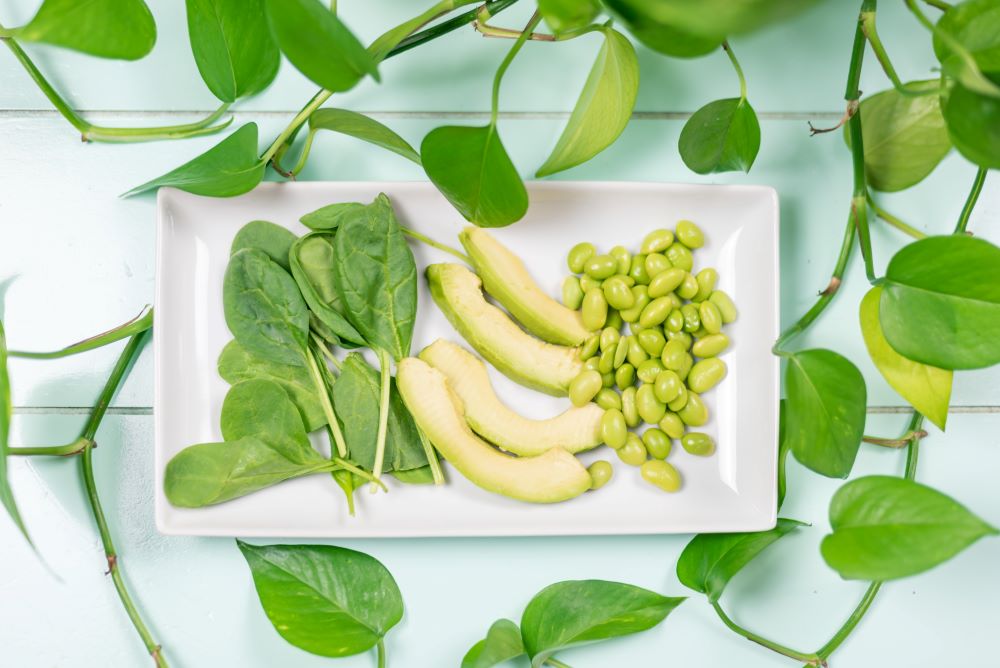
Leafy green vegetables are excellent sources of magnesium. These vegetables provide essential nutrients and contribute significantly to your daily magnesium intake. Here is a list of vegetables that will be helpful to you if you are looking for a
vegetarian magnesium source:
| SNo. | Vegetable | Description |
| 1 | Spinach | One cup of cooked spinach contains 157 mg of magnesium, offering 39% of the daily value (DV). |
| 2 | Swiss Chard | One cup of cooked Swiss chard contains 151 mg of magnesium, providing 36% of DV. |
| 3 | Artichokes | One medium artichoke delivers 77 mg of magnesium, offering 18% of DV. |
| 4 | Lima Beans | One cup of cooked lima beans contains 126 mg of magnesium, serving approximately 30% of the DV. |
| 5 | Acorn Squash | One cup of cooked acorn squash provides 88 mg of magnesium, offering 21% DV. |
| 6 | Potatoes | A medium-sized potato contains 48 mg magnesium, i.e., 12% of DV. |
| 7 | Kale | One cup of cooked kale offers 74 mg of magnesium, providing 18% DV. |
| 8 | Sweet Corn | One cup of cooked sweet corn contains 54 mg of magnesium and 13% of DV. |
| 9 | Green Peas | One cup of cooked green peas contains 62 mg of magnesium and 15% of DV. |
| 10 | Okra | One cup of raw okra contains 57 mg of magnesium and 14% of DV. |
List of Fruits Rich in Magnesium
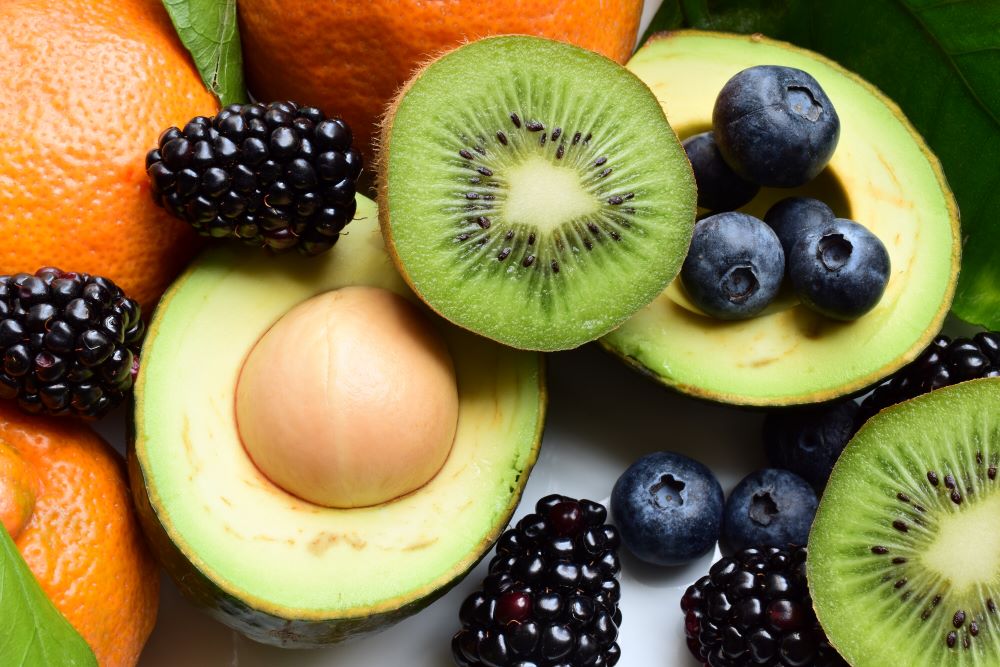
Certain fruits also contain notable amounts of magnesium. Adding them to your daily diet can help boost your magnesium intake while providing essential vitamins and minerals. The given below is the list of fruits that are rich in magnesium:
| SNo. | Fruit | Description |
| 11 | Bananas | One cup of sliced banana contains 41 mg of magnesium, offering 10% of the daily value (DV). |
| 12 | Avocados | One avocado contains 58 mg of magnesium, offering 14% DV. |
| 13 | Dried Figs | One cup of dried figs contains 101 mg of magnesium, providing 24% of DV. |
| 14 | Blackberries | One cup of blackberries contains 29 mg of magnesium, providing 7% of DV. |
| 15 | Cantaloupe | One cup of cantaloupe contains 21 mg of magnesium, providing 5% of DV. |
| 16 | Kiwi | One kiwi delivers 31 mg of magnesium, offering 7% DV. |
| 17 | Raspberries | One cup of raspberries contains 27 mg of magnesium, providing 6% of DV. |
| 18 | Grapefruit | One cup of grapefruit contains 21 mg of magnesium, providing 5% of DV. |
| 19 | Papayas | One cup of papaya contains 30 mg of magnesium, providing 7% of DV. |
| 20 | Guavas | One cup of guava slices offers 36 mg of magnesium, providing 9% of DV. |
List of Cereals and Dairy Products Containing Magnesium
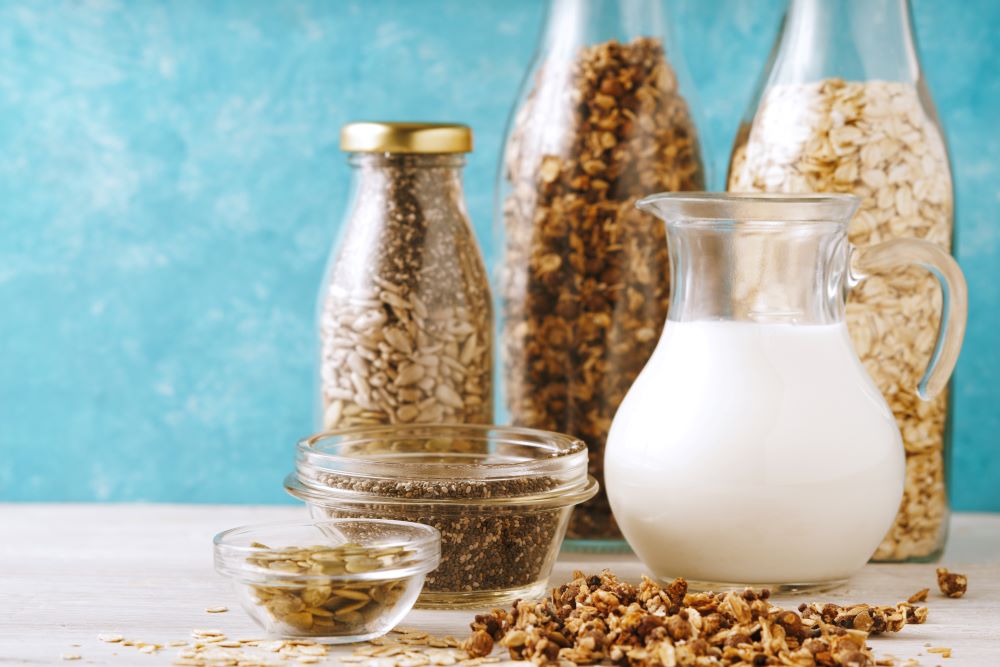
Dairy products can be good sources of magnesium. Additionally, certain cereals can also provide magnesium along with other essential nutrients. Some of the cereals and dairy products rich in magnesium include:
| SNo. | Food | Description |
| 21 | Oats | A 100g of oats contain 138 mg of magnesium, offering 33% of the daily value (DV). |
| 22 | Brown Rice | One cup of cooked brown rice offers 85 mg of magnesium, providing 20% DV. |
| 23 | Quinoa | One cup of cooked quinoa contains 118 mg of magnesium, offering 28% DV. |
| 24 | Milk (Cow's Milk) | One cup of cow milk contains 25 mg of magnesium, providing 6% of the daily value. |
| 25 | Yogurt | One cup of low-fat Yoghourt contains 41 mg of magnesium. |
| 26 | Cheese | A 100g of cheese contains 28 mg of magnesium, contributing 7% of the daily value. |
| 27 | Greek Yoghourt | A 100g of Greek Yogurt contains 11 mg of magnesium, representing 2% of the daily value. |
List of Seeds and Nuts Rich in Magnesium
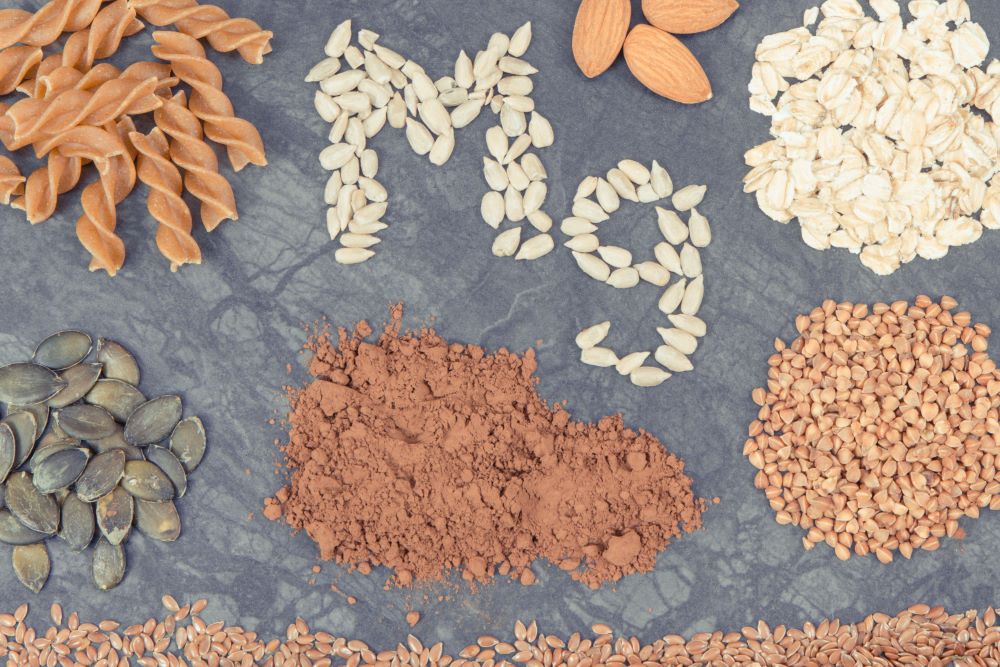
Seeds and nuts are excellent sources of magnesium. Incorporating the mentioned seeds and nuts into your diet can help increase your magnesium intake while providing healthy fats and protein.
| SNo. | Food | Description |
| 28 | Almonds | One ounce of roasted almonds contains approximately 80 mg of magnesium, providing about 19% of the daily value (DV). |
| 29 | Cashews | One ounce of roasted cashews contains around 72 mg of magnesium, offering about 18% of the DV. |
| 30 | Flaxseeds | One tablespoon of flaxseeds provides about 40 mg of magnesium. |
| 31 | Pumpkin Seeds | One ounce of pumpkin seeds provides about 150 mg of magnesium, supplying approximately 36% of the DV. |
| 32 | Sunflower Seeds | One ounce of sunflower seeds contains roughly 91 mg of magnesium, offering about 22% of the DV. |
| 33 | Chia Seeds | One ounce of chia seeds contains approximately 95 mg of magnesium, offering about 23% of the DV. |
| 34 | Brazil Nuts | One ounce of Brazil nuts contains roughly 107 mg of magnesium, offering about 25% of the DV. |
| 35 | Walnuts | One ounce of walnuts contains about 45 mg of magnesium, providing approximately 11% of the DV. |
List of Animal Proteins and Seafood High in Magnesium
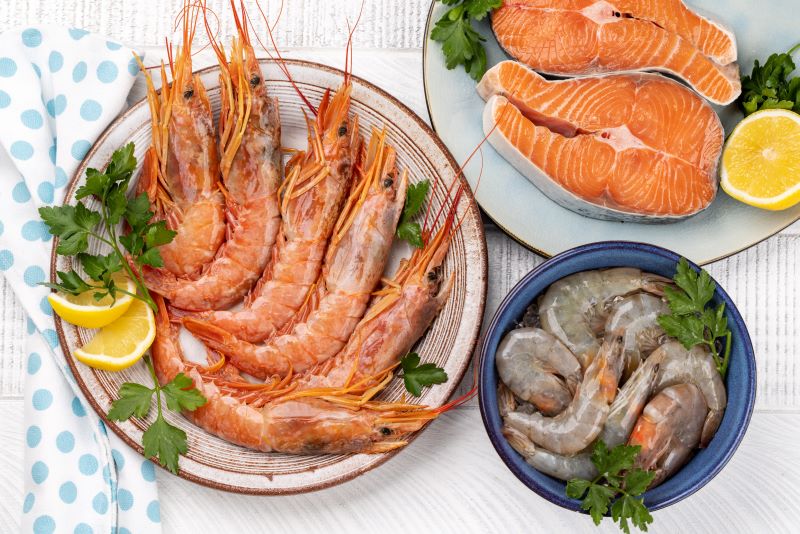
Some animal proteins also contribute to the daily magnesium intake. The table given below lists some of the animal protein and seafood high in magnesium:
| SNo. | Food | Description |
| 36 | Salmon | A 100g salmon contains 27 mg of magnesium, offering 6% of the daily value (DV). |
| 37 | Halibut | A 100g boiled halibut provides 29 mg of magnesium, providing 7% DV. |
| 38 | Shrimp | A 3-ounce serving of cooked shrimp contains 33 mg of magnesium, offering 6% DV. |
| 39 | Chicken Breast | A 100g chicken breast offers 29 mg of magnesium, providing 7% DV. |
| 40 | Turkey | A 100g turkey contains 30 mg of magnesium, offering 7% DV. |
How Much Magnesium Should You Intake Daily?
Getting adequate magnesium intake is essential for maintaining overall health and well-being. However, the recommended daily intake of magnesium can vary on the basis of certain factors, such as age, gender, and health status.
As per NIH, i.e., National Institutes of Health, the recommended dietary allowance (RDA) for magnesium intake for different age groups are mentioned below:
| Age Group | Recommended Magnesium Intake (milligrams per day) |
| Infants (up to 6 months) | 30 mg |
| Children 7-12 months | 75 mg |
| Children 1-3 years | 80 mg |
| Children 4-8 years | 130 mg |
| Children 9-13 years | 240 mg |
| Adolescents 14-18 years | 410 mg (boys) and 360 mg (girls) |
| Pregnant Adolescents (14-18 years) | 400 mg |
| Lactating Adolescents (14-18 years) | 360 mg |
| Adults 19-30 years | 400 mg (men) and 310 mg (women) |
| Pregnant Adults (19-30 years) | 350 mg |
| Lactating Adults (19-30 years) | 310 mg |
| Adults 31-50 years | 420 mg (men) and 320 mg (women) |
| Pregnant Adults (31-50 years) | 360 mg |
| Lactating Adults (31-50 years) | 320 mg |
| Adults 51+ years | 420 mg (men) and 320 mg (women) |
Stay on Track with These Health Tools
Health Benefits of Including Magnesium-Rich Foods in Your Diet
According to the National Institutes of Health and other sources, incorporating magnesium-rich foods into your diet can offer various health benefits, as magnesium is essential for various physiological functions in the body.
Including magnesium-rich foods in your daily diet can help ensure that you meet your daily magnesium requirements and reap the following health benefits:
Improves Heart Health: Magnesium helps regulate blood pressure and heart rhythm, contributing to cardiovascular health. Adequate magnesium intake has been associated with a lower risk of heart disease and stroke.
Aids in the Function of Muscles: Magnesium is involved in muscle contraction and relaxation, making it essential for optimal muscle function. Consuming magnesium-rich foods can help prevent muscle cramps and promote better athletic performance.
Supports Bone Health: Magnesium works synergistically with vitamin D and calcium to support bone health and prevent osteoporosis. It helps regulate calcium levels and contributes to bone density and strength in the body.
Boosts Energy Production: Magnesium is involved in energy metabolism, which is crucial in converting food into energy. Including magnesium-rich foods in your regular diet can help combat fatigue and boost energy levels.
Supports Nervous System: Magnesium is vital in nerve function and neurotransmitter signalling, supporting overall nervous system health. Adequate magnesium may help reduce the risk of neurological disorders and improve mood.
Regulates Blood Sugar: Magnesium helps regulate glucose metabolism and insulin sensitivity, contributing to stable blood sugar levels. Consuming magnesium-rich foods may decrease the risk of type 2 diabetes and improve glycemic control.
Aids in Stress Reduction: Magnesium has calming effects on the nervous system and may help reduce stress and anxiety levels. Including magnesium-rich foods in your diet can promote relaxation and overall mental well-being.
Different Ways to Include Magnesium-Rich Foods in Your Diet
Ensuring adequate magnesium-rich foods is essential for maintaining overall health and well-being. However, many people may struggle to incorporate these foods into their daily diet. Fortunately, there are several simple strategies and tips to help you boost your intake of magnesium and reap the associated health benefits:
Start with Whole Foods: Focus on including whole, unprocessed foods in your diet, as they are naturally rich in magnesium. Opt for whole grains, leafy green vegetables, nuts, seeds, and legumes as primary sources of magnesium.
Prioritise Leafy Greens: Leafy green vegetables like spinach, swiss chard, kale, and collard greens are excellent sources of magnesium. Incorporate these greens into salads, stir-fries, smoothies, and soups to increase your magnesium intake effortlessly.
Snack on Nuts and Seeds: Nuts and seeds are convenient and nutritious snack options that are also rich in magnesium. Include almonds, pumpkin seeds, sunflower seeds, cashews, and flaxseeds in your snack rotation to boost your magnesium levels throughout the day.
Choose Magnesium-Rich Fruits: Some fruits, such as bananas, avocados, figs, and raspberries, contain decent amounts of magnesium. Incorporate these fruits into your meals, snacks, or smoothies to increase your magnesium intake while satisfying your sweet cravings.
Incorporate Whole Grains: Whole grains like quinoa, brown rice, oats, and barley are rich in fibre and provide significant amounts of magnesium. Replace refined grains with whole grains in your meals to increase your magnesium intake and promote overall health.
Include Legumes in Meals: Legumes such as lentils, chickpeas, black beans, and kidney beans are excellent sources of magnesium and protein. Add legumes to salads, soups, stews, and chilli to enhance the nutrient content of your meals while increasing your magnesium intake.
What are the Symptoms of Magnesium Deficiency?
Identifying magnesium deficiency symptoms is crucial for maintaining optimal health, as magnesium is vital in numerous physiological functions. While magnesium deficiency is relatively uncommon, certain symptoms may indicate inadequate magnesium levels. Here are some common signs and symptoms to watch out for:
What are the Health Risks of Not Getting Enough Magnesium?
Failing to meet your magnesium needs can lead to a range of adverse health effects. Here are some of the potential risks associated with not getting enough magnesium:
What are the Side Effects of Excessive Magnesium Intake?
While magnesium is essential for numerous physiological functions, consuming too much of this mineral can have adverse effects on the body. Here are some of the health risks that may arise from consuming too much magnesium:
Should You Take a Magnesium Supplement?
Deciding whether to incorporate a magnesium supplement into your daily routine is a nuanced decision that depends on various factors. Firstly, it's essential to evaluate your current dietary intake of magnesium-rich foods and assess whether you're meeting your daily requirements through diet alone.
Next, consider your individual health status and any underlying conditions or medications that may affect magnesium absorption or utilisation in the body. Consulting with a healthcare expert, such as a doctor or registered dietitian, can provide personalised guidance on whether supplementation is necessary and the appropriate dosage and form to consider.
In essence, incorporating magnesium-rich foods into your diet can offer various health benefits and support overall well-being. From leafy greens and nuts to whole grains and legumes, there are plenty of delicious and nutritious options to choose from. Magnesium plays a crucial role in different bodily functions.
By prioritising foods high in magnesium, you can maintain optimal health and lower the risk of deficiency-related health issues. However, it's essential to remember that balance is key, and supplementation should only be considered under the guidance of a healthcare professional.
Protect What Matters - Explore Other Insurance Options














